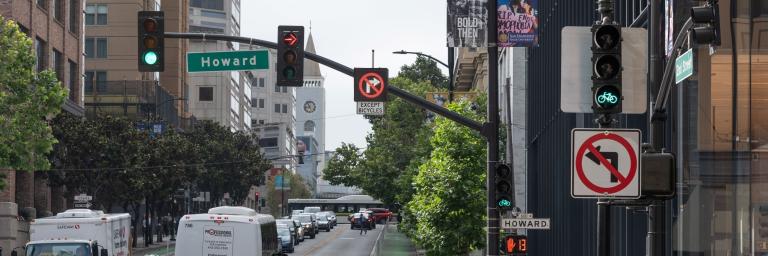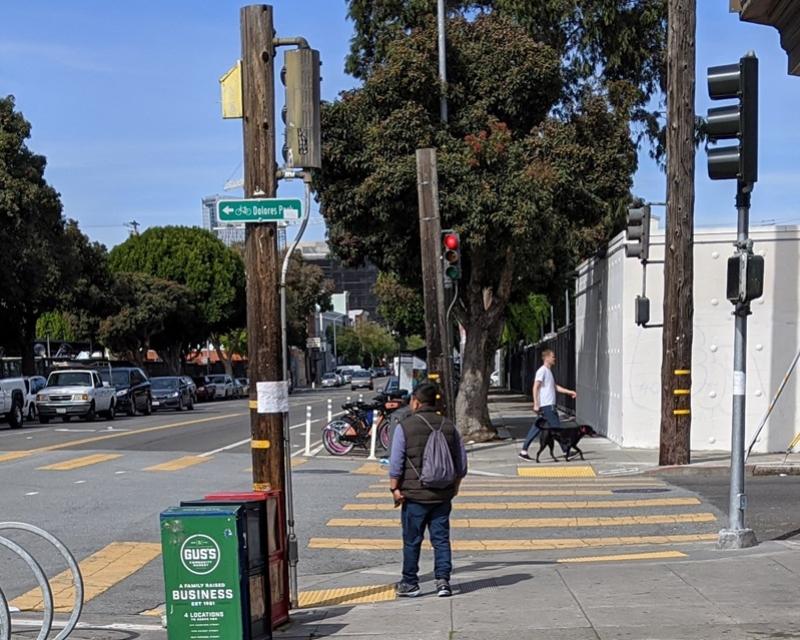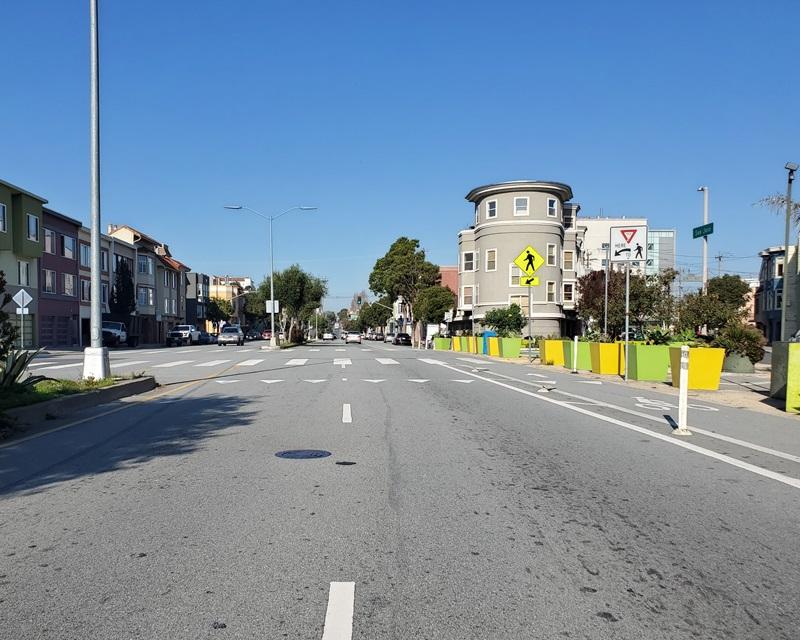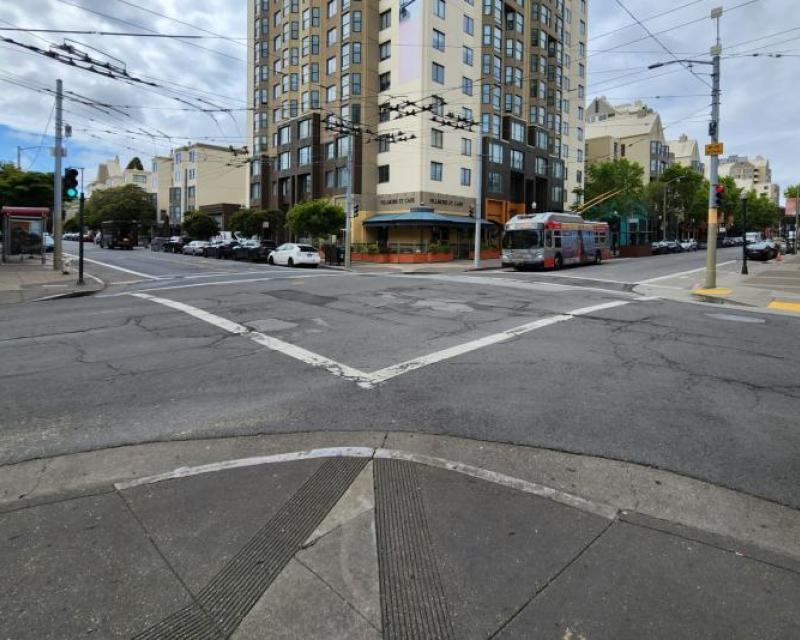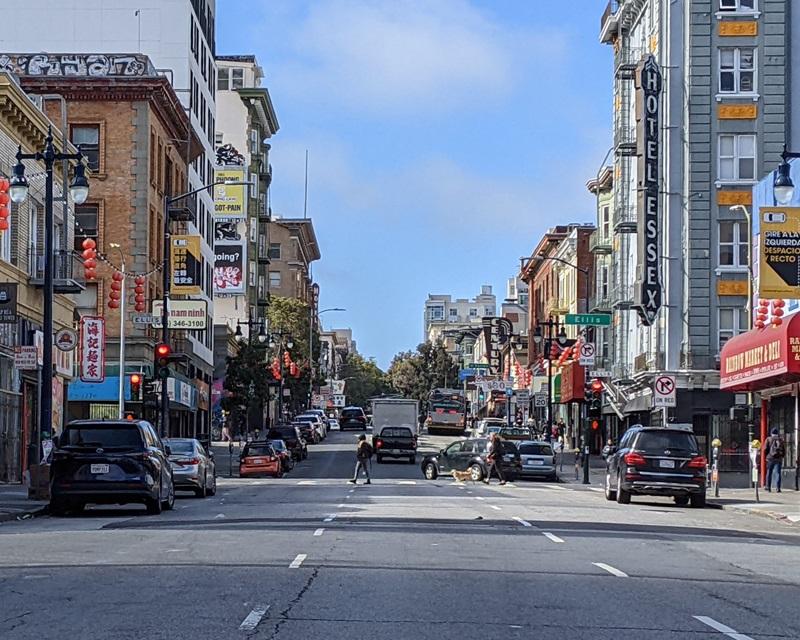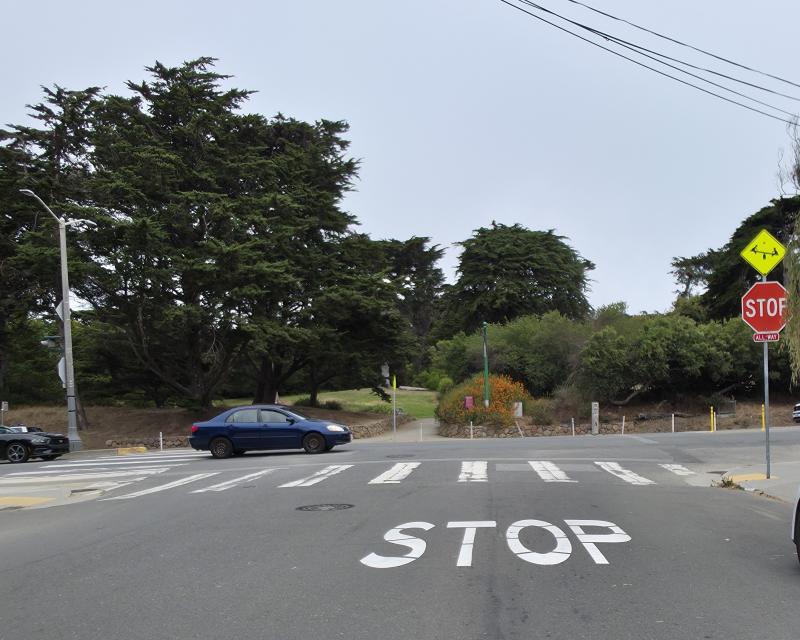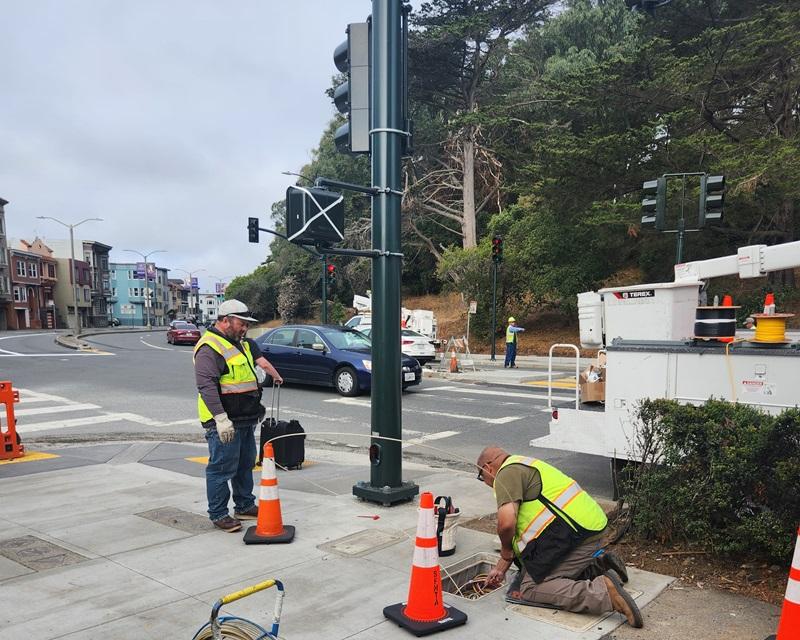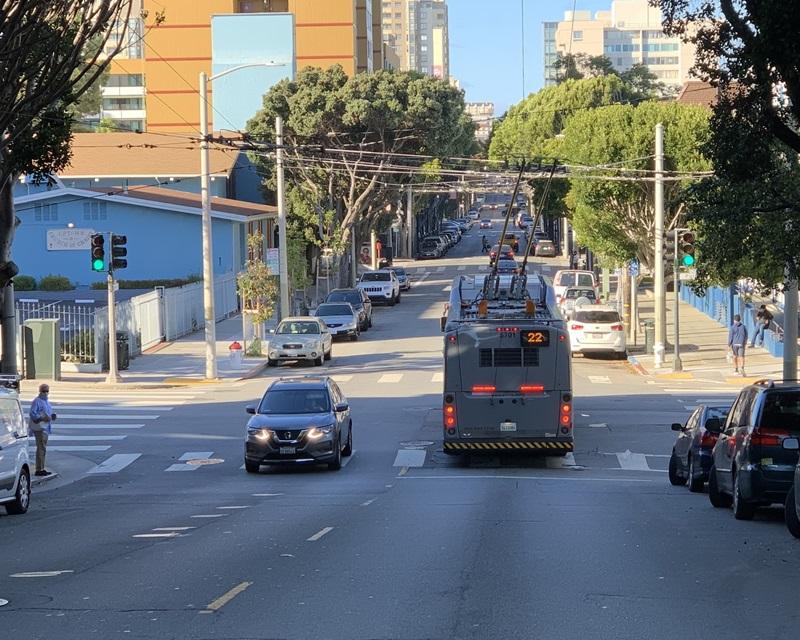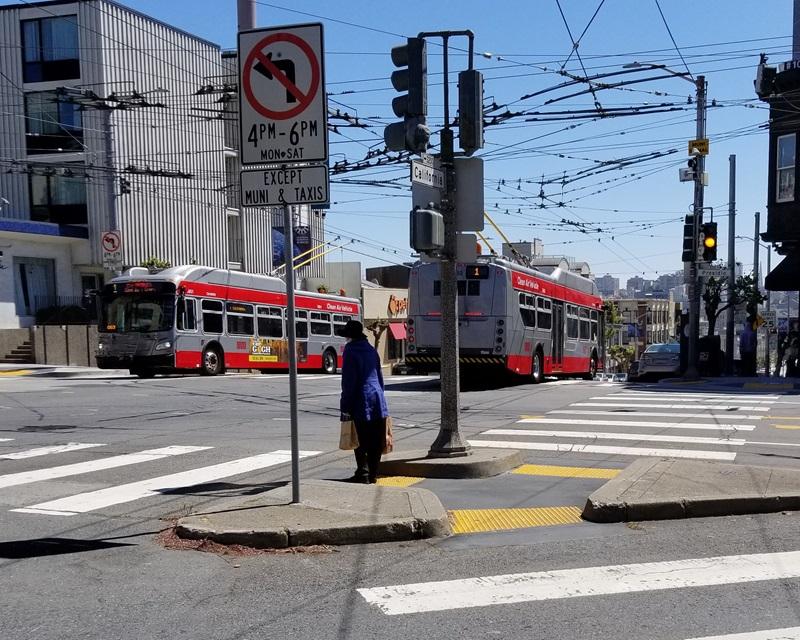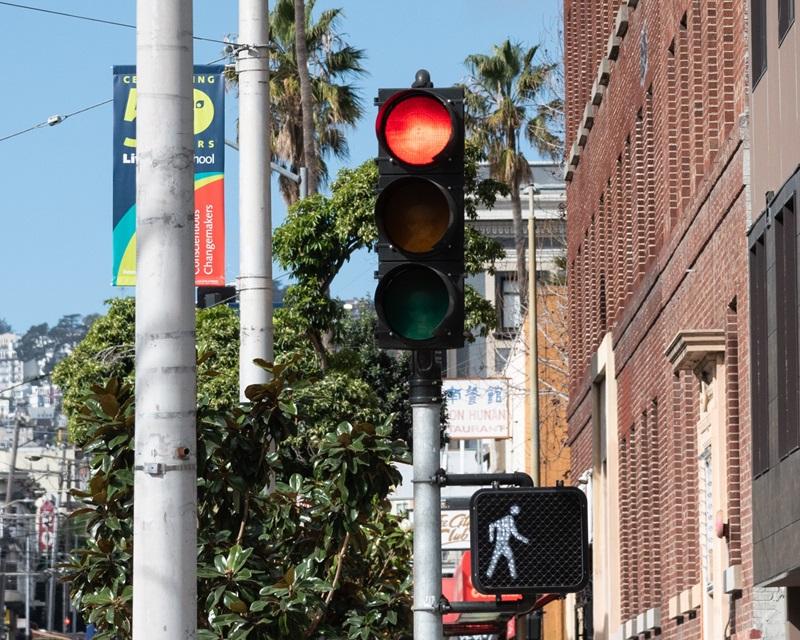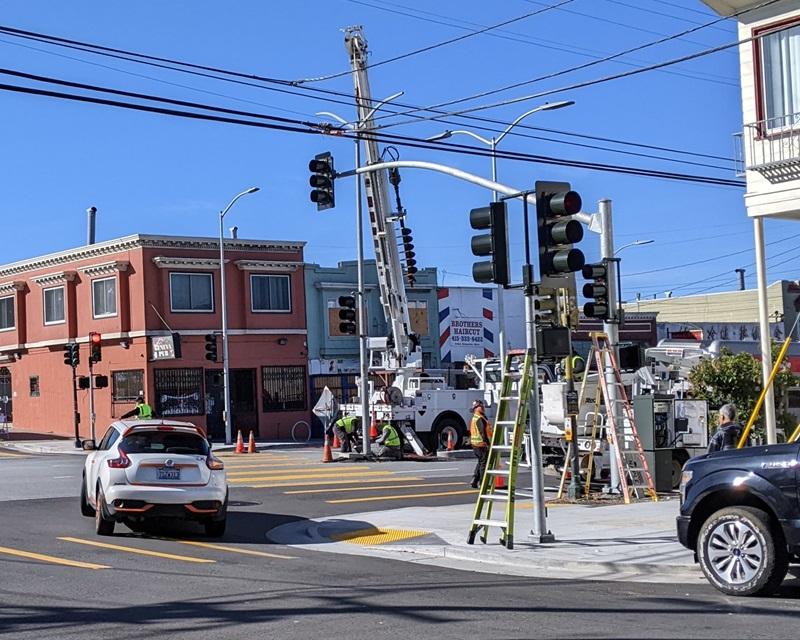The Traffic Signals Program is much more than the red, yellow, and green lights you see over San Francisco streets. SFMTA’s Traffic Signals Program is responsible for the design, construction, and maintenance of traffic signals and related infrastructure in the City and County of San Francisco. The SFMTA maintains over 1,300 signalized intersections. Traffic signals are an essential part of the safe and smooth function of the transportation system for all roadway users including transit, pedestrians, bicycles, and vehicles. Traffic signal projects make the city safer by limiting traffic speed, managing congestion, and increasing mobility and accessibility. Our projects decrease travel times and reduce emergency response times. We make it easier, faster, and safer for you to move around San Francisco.
Types of Traffic Signal Projects
The Traffic Signals Program manages projects that install new traffic signals and upgrade or modify existing traffic signals. A typical project includes construction of between five and 30 intersections depending on funding availability. Including multiple locations in a single project allows for efficient planning and design and also lowers the cost of construction.
Traffic signal projects typically fall into one of the following categories:
- New Traffic Signal Projects: New traffic signal projects construct new traffic signals at intersections that were uncontrolled or controlled by stop signs.
All new traffic signals constructed by SFMTA include pedestrian countdown signals and accessible pedestrian signal (APS) push buttons. Projects will also improve intersection street lighting and construct ADA compliant curb ramps to meet current standards.
Some new traffic signals projects include installing pedestrian activated flashing beacons. They feature flashing yellow lights activated by a push button which reinforces painted crosswalk markings and crosswalk warning signs. Pedestrian activated flashing beacons may be installed at locations where pedestrians have opportunities to cross without the need for a traffic signal. They improve safety by calling the attention of passing drivers to crossing pedestrians.
- Traffic Signal Upgrade Projects: Half of San Francisco’s traffic signals were built more than 30 years ago. At that age, a traffic signal has outlasted its useful life and if left untouched can begin to fail. A signal’s useful life varies depending on age, materials used at the time of construction, and exposure to weather and the environment. Traffic signal upgrade projects completely replace the aging parts of a traffic signal to make sure it will continue to operate reliably.
Replacement traffic signals built as part of a traffic signal upgrade project are designed to the latest standards and include pedestrian countdown signals, accessible pedestrian signal (APS) push buttons, signal mast arms, and larger 12” signal heads for improved visibility. These kinds of improvements have been shown to reduce broadside and pedestrian collisions.
- Traffic Signal Modification Projects: Traffic patterns change over time, so the design and operation of traffic signals must change to cope with the new movement patterns. Growing neighborhoods and shifting commute patterns may benefit from the installation of new left or right-turn signals. Intersection safety analysis may show a need for signal visibility improvements to reduce common crashes. To address these operational needs, an existing traffic signal may be included in a traffic signal modification project to add new poles, signals, or other signal equipment without replacing all parts of the existing traffic signal.
- Traffic Signal Timing Projects: Traffic signal timing projects improve safety and increase mobility by altering the sequence or duration of traffic lights along a corridor or throughout a neighborhood of the city. Common improvements include increased pedestrian crossing time, leading pedestrian intervals (LPIs) where the “walk” signal begins a few seconds before drivers get a green light, and coordination with adjacent signals to manage traffic speeds and traffic backups. Signal timing projects do not change the physical traffic signal hardware at intersections.
- Intelligent Transportation System (ITS) Projects: ITS projects improve transportation safety and mobility through the integration of advanced communications technologies into the traffic signal infrastructure. SFMTA’s ITS is composed of:
- Transit signal priority (TSP) used to reduce dwell time at traffic signals for Muni vehicles by holding green lights longer or shortening red lights, and emergency vehicle preemption (EVP) for San Francisco’s Fire Department;
- Closed-circuit television (CCTV) cameras installed at locations strategically selected to more efficiently monitor traffic and field conditions, and to support various SFMTA’s daily operations, as well as emergency operations, planned and unplanned street events, and monitoring construction site activities;
- Variable message signs (VMS) used to disseminate information to the public, including roadway incident alerts, roadway disruptions due to construction or planned special events, and public service announcements; and
- The core component of any ITS, the traffic signal communication network, which allows for remote two-way communication, and monitoring and operations of TSP, VMS and CCTV equipment, as well as remote monitoring of other traffic signal devices managed by SFMTA’s Traffic Signal Shop.
ITS projects typically include network expansion and installation of TSP/EVP equipment and/or CCTV cameras. ITS projects also include replacement of devices that are reaching the end of their useful life and are becoming less efficient and reliable. ITS projects are often implemented as part of other types of traffic signal projects.
- Other Projects: Traffic signal improvements may also be part of larger projects like streetscape redesign or neighborhood development projects. For large projects, detailed information can be found on the appropriate project webpages and may not be listed here.
How are Project Locations Selected?
Locations for new traffic signals, traffic signal upgrades, and traffic signal modifications are chosen and prioritized based on several factors including:
- Traffic patterns, pedestrian needs, and transit needs
- Intersection safety analysis and collision history
- Constituent requests
- Growth due to new developments or subdivisions
- Coordination with other projects
To request a new traffic signal, a change to an existing traffic signal, or to ask about a traffic signal project, please contact the San Francisco 311 Self Service portal or call 311. (For calls outside of San Francisco, dial 415.701.2311; TTY: 415.701.2323). Please include your name and contact information for follow-up.
Funding for Traffic Signal Projects
Traffic signal projects are funded from various sources. The most common funding source is the San Francisco County Transportation Authority’s Proposition L Half-Cent Sales Tax, which was approved by voters in 2022. Other Funding Sources include:
- SFMTA Revenue Bonds
- General Obligation Bonds
- 2014 Proposition B General Fund Population Baseline
- 2019 Proposition D Traffic Congestion Mitigation Tax
- State and federal grants
Traffic Signal Repair
To report a traffic signal that needs maintenance or repair by the SFMTA’s Traffic Signal Shop, please contact the San Francisco 311 Customer Service Center (24 hours a day) by calling 311. (For calls outside San Francisco, dial 415.701.2311; TTY: 415.701.2323.)
In order to ensure a quick response, reports for traffic signal maintenance and repair must be made by phone and cannot be made through the 311 Self Service portal website or 311 phone app.
Traffic Signal Projects
Below is a list of traffic signal projects managed by the SFMTA's Streets Division:
